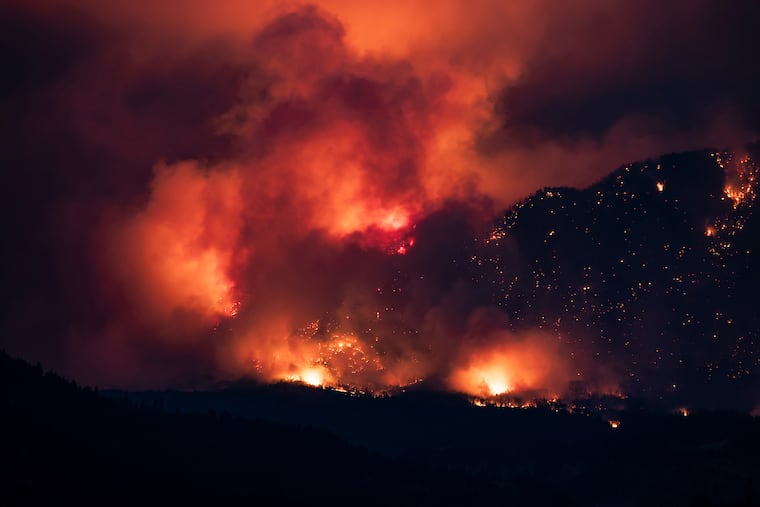That persistent milky sky over Philly is smoky haze from the Pacific Northwest wildfires
The smoke in the high atmosphere has been riding upper-air currents from the west.

Haze is a summer staple in the Philadelphia region, but the exceptional milkiness in the skies the last few days has been the result of smoke from wildfires in the Pacific Northwest, meteorologists say.
The smoke in the high atmosphere has been riding upper-air currents from the west on a 2,500-mile cross-continental journey, and it was unclear when the milky veil would vanish, said Lee Robertson, the fire-weather specialist at the National Weather Service Office in Mount Holly.
On Wednesday the smoke was covering most of Pennsylvania and South Jersey.
More than 200 wildfires were burning Wednesday in British Columbia.
Milky skies would be a trivial complaint compared with the summer hell endured by some residents of British Columbia, scorched by record heat and drought.
Canadian officials said that while “a few cracks” have been appearing in the weather system that has capped that region under an oppressive heat dome, even that has posed dangers from “sporadic thunderstorms,” which, of course, come with lightning.
Close to 60% of wildfires in the province are touched off by lightning strikes, British Columbia officials have calculated.
More than 700,000 strikes occurred in one 15-hour period in the province last week, according to Chris Vagasky, lightning data and safety specialist with the U.S. National Lightning Safety Council. Vagasky said that such a quantity of strikes was “very unusual” for western Canada, which is far less lightning prone than areas to the east.
That figure would constitute about 5% of the average annual number of strikes for all of Canada, which is about 13 million to 14 million, he said.
» READ MORE: Smoke from the deadly Western wildfires making Philly weather cooler, and skies milkier
Fires routed about 1,000 residents from a small town 90 miles north of Vancouver and were blamed for two deaths. However, CBC news quoted a provincial official as saying that particular blaze might have been set deliberately.
The smoke might be having one benign effect in Philly, said Trent Davis, Robertson’s colleague in Mount Holly: The subtle shading might be shaving a degree or so off the temperatures.
Not that it mattered much on Tuesday — the heat index at 3 p.m. in Philadelphia was 102, and Wednesday afternoon is looking like an encore.